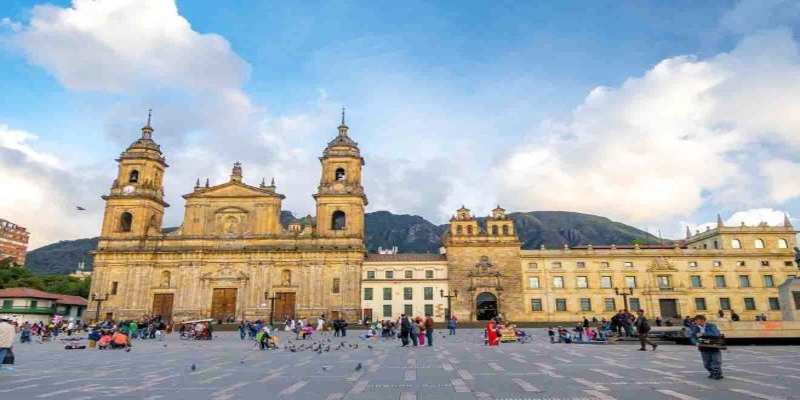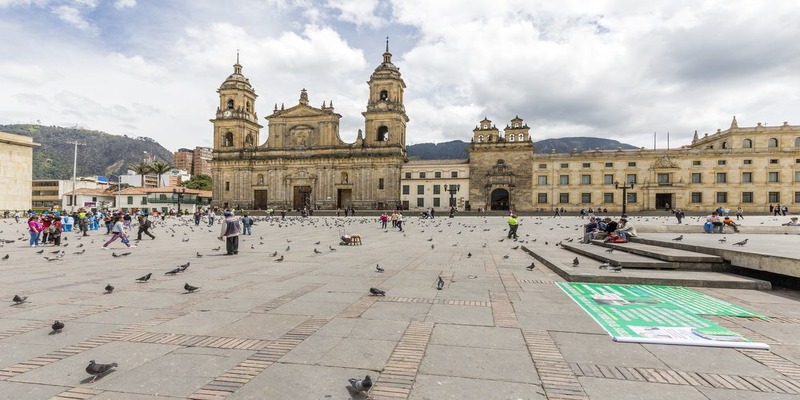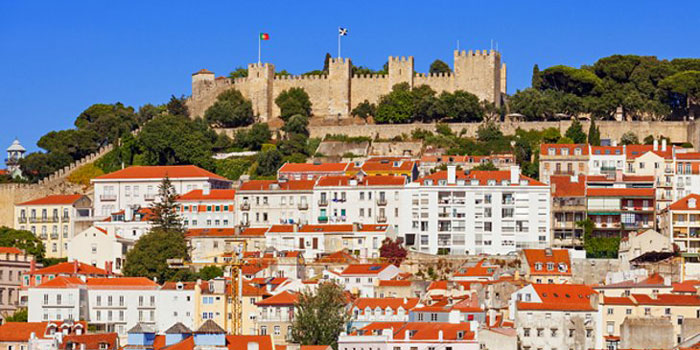I was informed of this, at least. Unfortunately, not everyone has kind things to say about the Colombian city of Bogota, whose reputation precedes it. Locals cautioned us to be cautious, recounting heartbreaking tales of misplaced belongings and unsettling encounters.
Some travelers advised us to avoid Bogota altogether. I made room in my Colombia itinerary for a quick trip to Bogota since I was keen to learn more about the city after hearing some secondhand reports.
Bogota is a pleasant city with a dynamic culture with lots of intriguing things to see and do, so long as you use common sense and research Colombia travel advice before you arrive.
Go Straight To Monserrate For A Panoramic View of Bogota.

Whenever I arrive in a new city, my initial instinct is to go somewhere high up to get a perspective and become oriented. The city's highest peak, Monserrate, is undoubtedly the best location for a city view in Bogota.
Cerro de Monserrate towers over the city at 3,152 meters above sea level. Long before Spanish immigrants built a church at its peak in 1640, the local Muisca people revered the mountain.
Cerro Monserrate's summit offers expansive views of Bogota that cannot be matched or missed. Unbelievably, a whole picture is not attainable because Bogota is so enormous that certain areas need to be visible from Monserrate.
Take the funicular up to Monserrate for the most incredible view. The cable car replaces the funicular in the afternoons. You can also climb the hill if you're willing to do what countless other pilgrims did before.
Travel To Monserrate Sanctury
The views of the city alone make Monserrate worthwhile, but you should only descend the mountain after first seeing the Monserrate Sanctuary, which dates back to the 17th century. The neo-Gothic Catholic church that dominates the location is said to have been built with the help of eager pilgrims who each carried one brick for the 2.5-kilometer ascent of the mountain.
The church's stark exterior and minimalist interior complement each other. A statue of the Black Madonna, the patron saint of Catalonia, is hidden in one of the ornately painted niches on either side of the nave. Covering the church takes 15 to 20 minutes.
If you're fortunate, you might be sitting in a congregation of contemporary pilgrims, as we did. Just as we walked through the doors, a procession of devout believers who had scaled Monserrate on their hands and knees entered. They proceeded down the aisle in a final formation. It was impressive to see.
Discover Pre-Columbian Culture At The Gold Museum
I completely anticipated that the Gold Museum would emphasize Colombia's colonial history and the so-called New World quest for God, Gold, and Glory because I'm Australian and have grown up with the Gold Rush myth.
In actuality, the museum explores Pre-Columbian Colombia or the Colombia that existed before the arrival of the conquistadors. The Gold Museum is the ideal site to find more information about this exciting period of Colombian history.
There are others besides you. Given the resources at their disposal at the time, Colombia's most renowned indigenous group performed groundbreaking work in metallurgy that is nothing short of astounding. They should have gained a reputation similar to the Zapotecs, Mayans, or Aztecs, but regrettably, they did not.
Explore Bogota's Oldest Neighborhood, The Colorful La Candelaria
The Gold Museum is ideally located on the outskirts of La Candelaria, Bogota's historic district. It's startling to see the brightness of day after seeing the dimly illuminated museum exhibits.
But I promise you; you don't want to miss this aspect of Bogota. The La Candelaria neighborhood can only be seen on foot. Take your time strolling the cobblestones and take in all the intricate details of the deteriorating buildings and picturesque streetscapes.
Explore Street Art And Cafe Culture On Callejān Embudo

The Callejón Embudo, a confined street in Bogotá, is unquestionably one of the most excellent places to hike. It captures the distinctively Bogotano blend of historic elegance and current urban culture with a dash of grunge and is located in the city's oldest neighborhood.
In La Candelaria, not far from Square Bolvar, you'll find Callejón Embudo just off the Plazoleta Chorro de Quevedo. In this plaza, the Spanish founded the first town in what became Bogotá. Due to the abundance of hostels, this region is one of the most well-liked places for travelers to stay in Bogotá.
Since it's a short detour from the other La Candelaria attractions, you can take this tour on your own as part of a more comprehensive neighborhood or graffiti tour. On the Plazoleta Chorro de Quevedo, proceed down the small alleyway to the small church's right.




